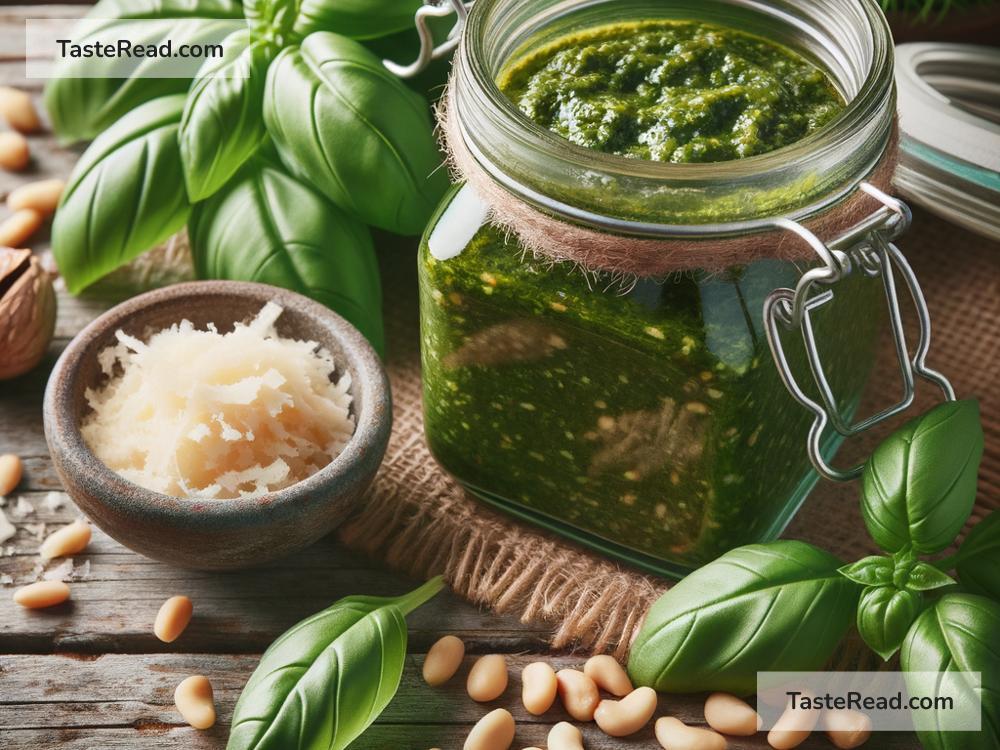Title: The Journey of Pesto: From Italian Roots to Mediterranean Classic
Imagine you’re strolling through the charming streets of Genoa, Italy, where the air is filled with a blend of sea breeze and the tantalizing aroma of fresh basil. This is the birthplace of one of the world’s most beloved sauces – pesto. But how did this humble Italian sauce carve its name into the culinary heart of the Mediterranean and beyond? Let’s unravel the journey of pesto from its Italian roots to becoming a Mediterranean classic.
The Origins of Pesto
The story of pesto begins in the lush region of Liguria, Italy, where the conditions are perfect for growing basil, the star ingredient of this sauce. The original recipe, known as “pesto alla Genovese,” is a simple yet brilliant concoction of fresh basil leaves, garlic, pine nuts, Parmigiano-Reggiano (Parmesan cheese), Pecorino cheese, and a generous drizzle of extra virgin olive oil, all crushed together using a mortar and pestle. The term ‘pesto’ itself comes from the Italian word ‘pestare’, which means to pound or crush, reflecting the traditional method of preparation.
A Sauce for the Sailors
Historically, pesto played an essential role in the diet of Genoese sailors. The sauce’s long shelf life made it an ideal food for long voyages, providing a burst of flavor and necessary nutrients to the hardy sailors of the Mediterranean. As these sailors traveled, they introduced pesto to various ports, spreading its popularity across the region.
Pesto Goes Global
In the 19th and 20th centuries, Italian immigrants began to move across the world, taking with them their traditions, cultures, and of course, their culinary treasures. Among these was pesto, which found a new home in countries from America to Australia. As international travel and cuisine exchange became more accessible, pesto’s fame continued to spread, evolving along the way. Today, it is not uncommon to find pesto variants that include ingredients like sun-dried tomatoes, arugula, or even cilantro, catering to local tastes and ingredient availability.
The Mediterranean Diet
The rise in popularity of the Mediterranean diet, celebrated for its health benefits and focus on fresh, high-quality ingredients, has further cemented pesto’s status as a culinary classic. Rich in antioxidants, healthy fats, and vitamins, pesto embodies the essence of the Mediterranean diet. This has not only broadened its appeal but also introduced it to health-conscious consumers around the globe.
Pesto in Modern Cuisine
Pesto has seamlessly integrated itself into modern cuisine, showcasing its versatility across a plethora of dishes. While traditionally paired with pasta, pesto is now a global condiment, enhancing sandwiches, pizzas, salads, and even soups. Chefs and home cooks alike experiment with pesto, blending tradition with innovation to create new and exciting dishes.
Moreover, the simplicity and speed of making pesto have made it a favorite among those seeking to prepare quick yet flavorful meals. In an era where time is precious, pesto offers a swift passage to culinary excellence, embodying the quintessential Italian approach to cooking – wherein minimal, high-quality ingredients lead to maximum flavor.
Sustainable and Inclusive
In recent years, the sustainability and inclusivity of pesto have come to the forefront. With increasing awareness about environmental and dietary needs, pesto’s flexible recipe has been adapted to suit a variety of lifestyles and requirements, including vegan versions that substitute cheese with nutritional yeast or nuts. This adaptability has played a crucial role in maintaining pesto’s relevance and popularity in contemporary culinary culture.
Conclusion
From the terraced gardens of Liguria to the bustling streets of New York, pesto has journeyed far and wide, etching its place in the hearts of food lovers across the globe. Its journey reminds us that great cuisine transcends borders, connecting us through the universal language of food. As we spoon pesto over our pasta or spread it on our bread, we partake in a tradition that, while deeply Italian, has become a beloved staple of Mediterranean cuisine. Pesto, with its rich history, simplicity, and versatility, continues to charm the world one dish at a time.


